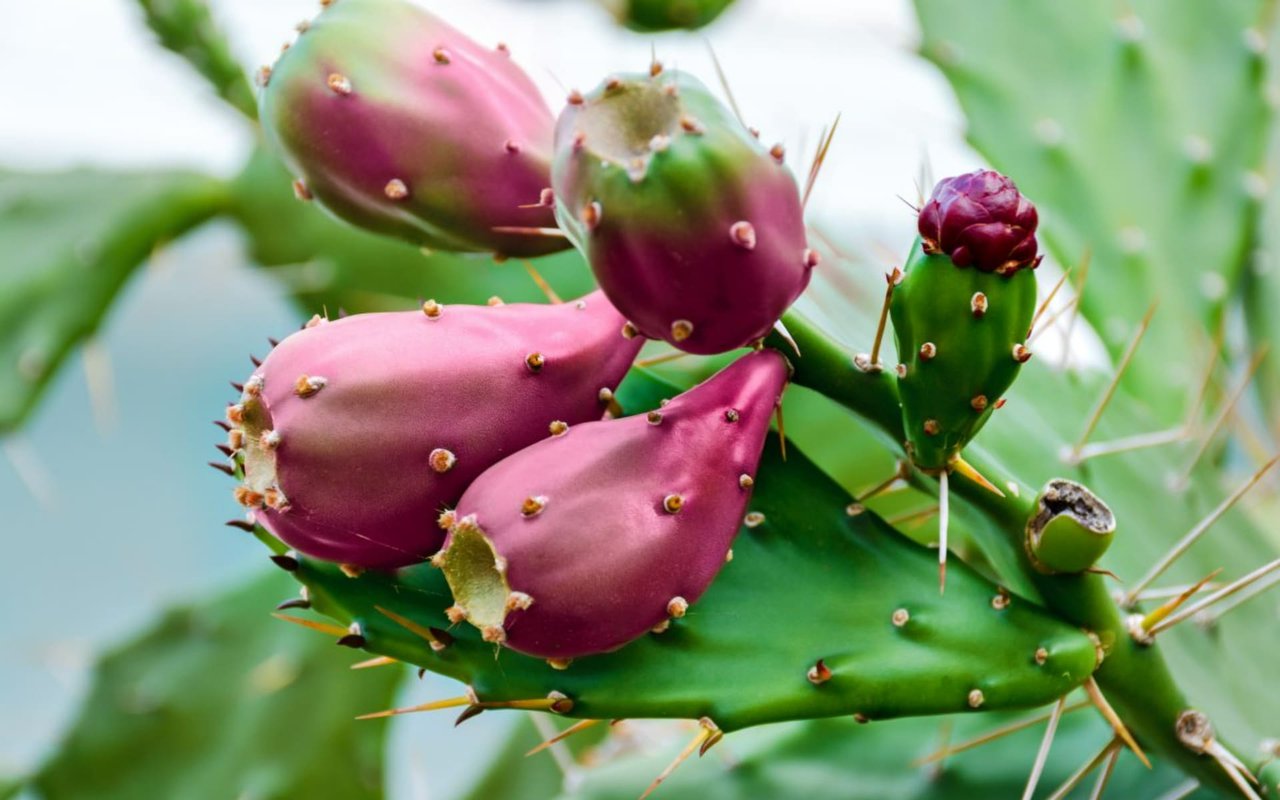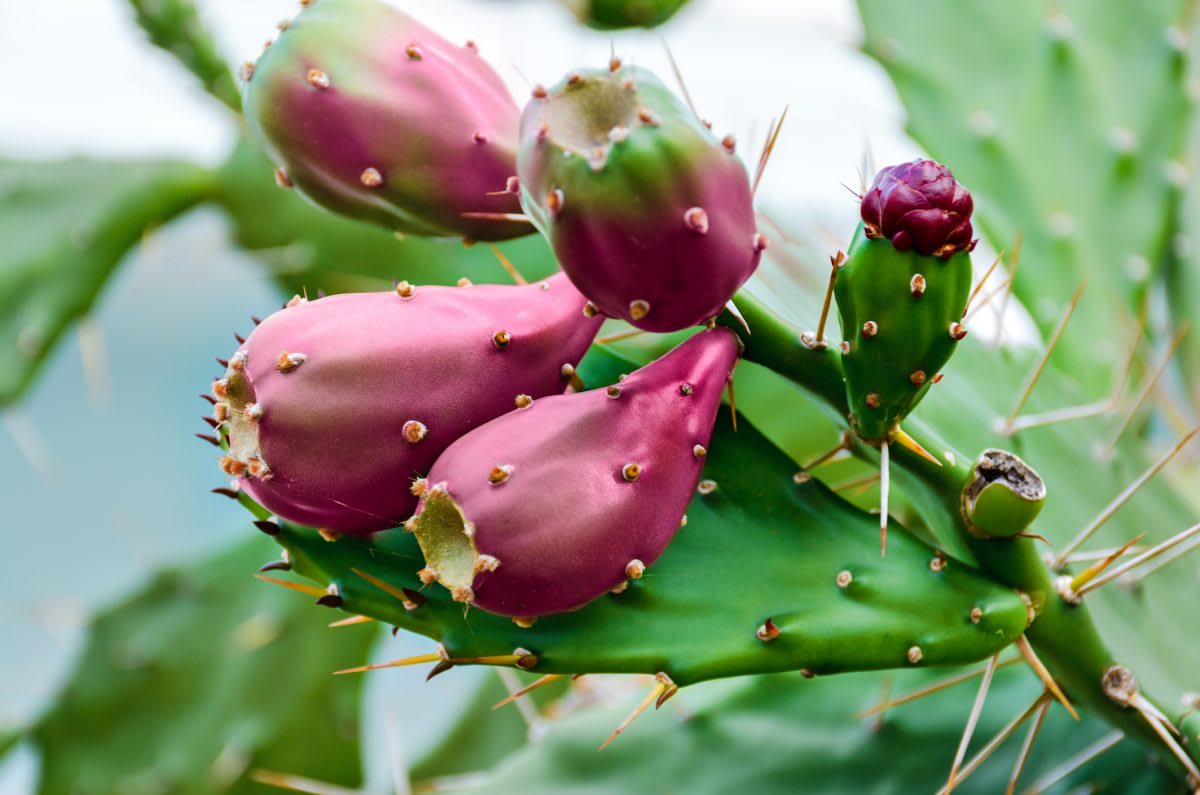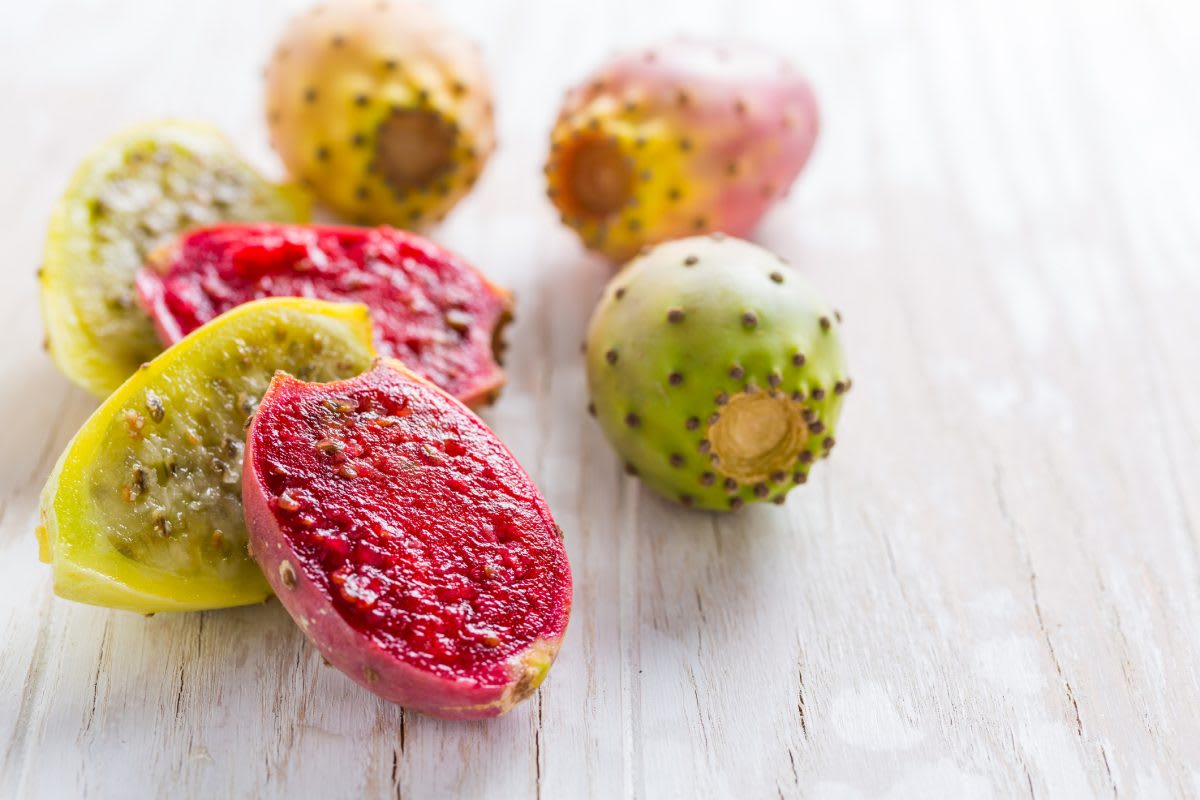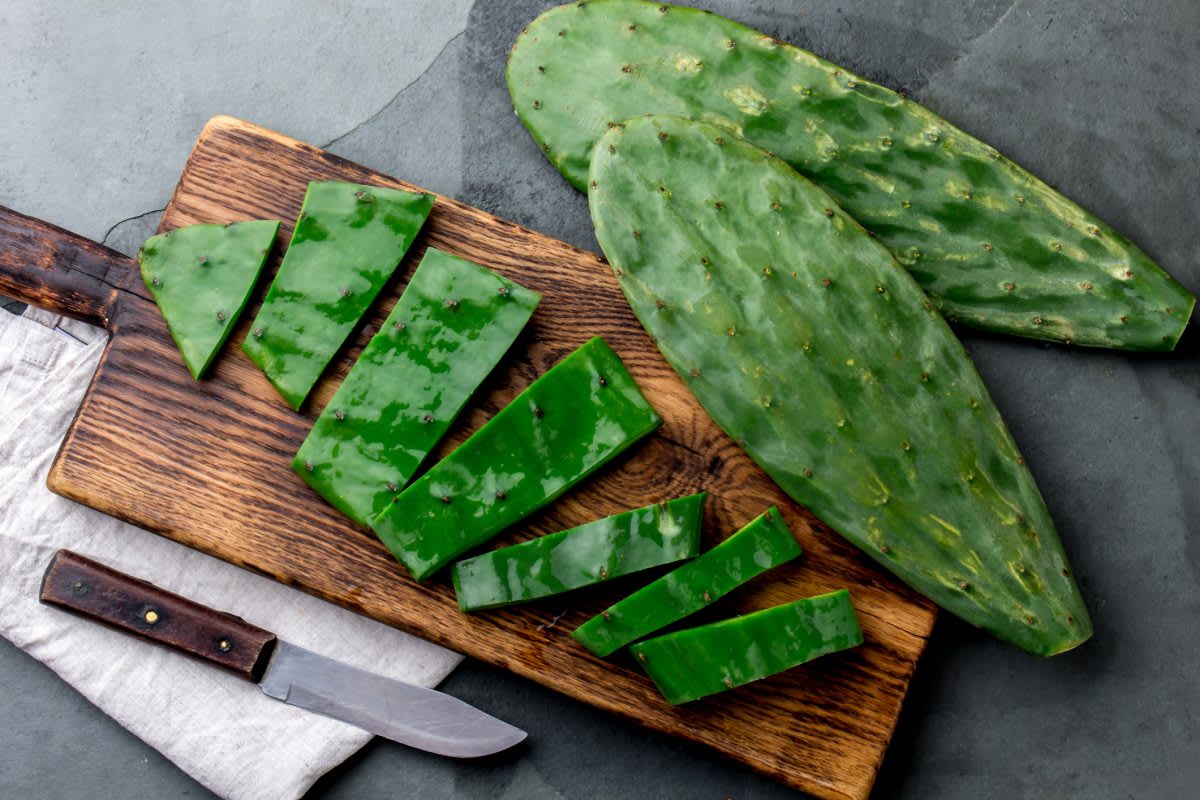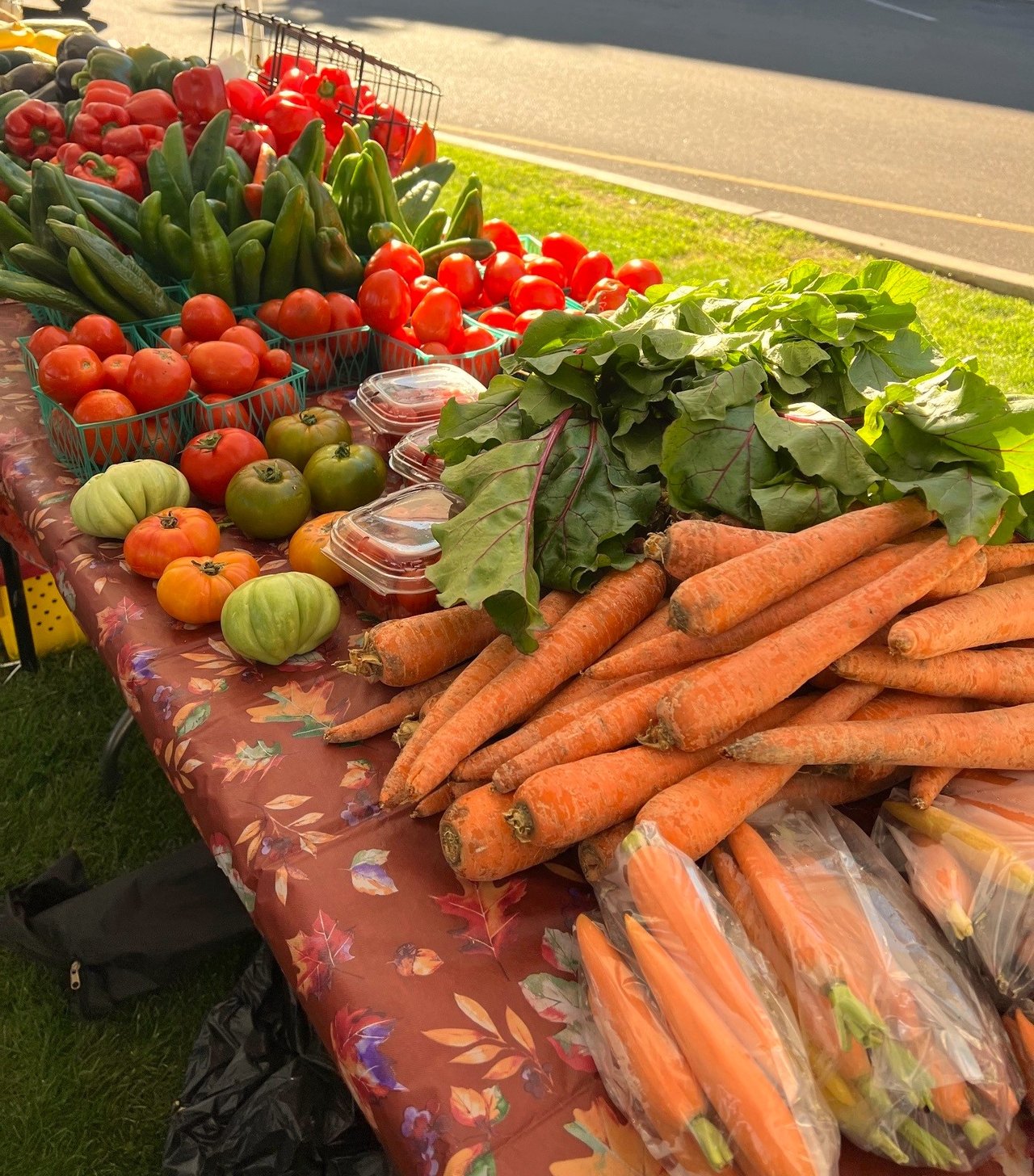Opuntia cactus fruits ripen.
Have you ever had your mouth water while you looked at a prickly pear cactus? Perhaps it should!
Prickly pears, spiny cacti of the genus Opuntia, are native to the Western Hemisphere but have been shared around the world. For hundreds of years, they have provided nutrition and medicine to people wherever they grow.
In the spring, the plant flowers, and then the colorful fruits begin to grow. In Spanish-speaking areas, the fruit is called tuna and the pads are called nopales (plural of nopal). Both are edible.
Prickly pear (Opuntia ficus-indica) on wooden background.
This plant can be used in almost any kind of dish you can imagine. The flat green pads are eaten like a vegetable and are a staple food in the Mexican diet. When cooked, the taste is like a green bean and the texture is like okra.
The fruit is popular as candy, jelly, or syrup for beverages and desserts. They have a slight bubble gum or watermelon flavor. The darker the fruit, the sweeter the flavor.
When harvesting prickly pear, use caution to avoid contact with the glochids, the hairlike prickles that stick to the skin. Wear thick gloves or use a long pair of tongs. To get rid of glochids, use a potato peeler or a flame. You can also purchase pads and fruits at a Mexican supermarket or Sprouts.
Leaves of cactus nopales, used as a Mexican food and drink ingredient.
In addition to food, prickly pear pads can be processed into an environmentally friendly leather replacement. A red dye, called betanin, is extracted from an insect that lives on the cacti. Essential oils from the flowers are used to make perfumes and the seeds are a source of oil.
Prickly pear has played an important role in Mexican folk medicine. One of its most popular uses is as a hangover cure. It is also used to treat burns.
Both fruits and pads are rich in slowly absorbed soluble fibers and have long been used to keep blood sugar stable, reducing the need for insulin. However, studies on this are ongoing and there are no scientifically proven results yet. You should consult a physician before using prickly pear medicinally.
